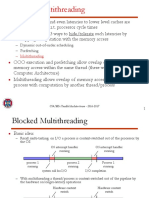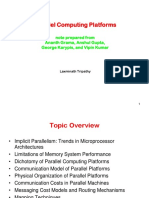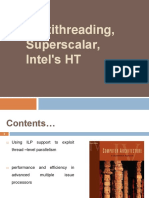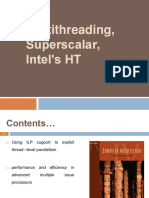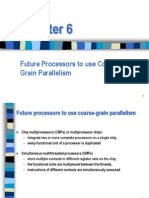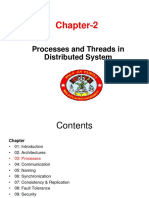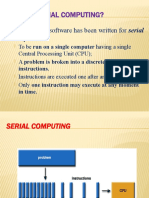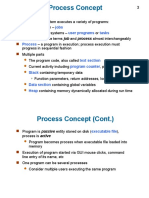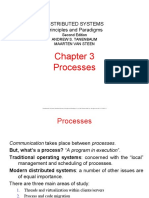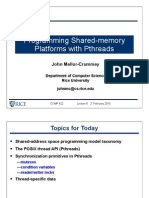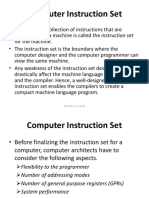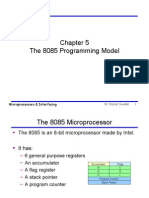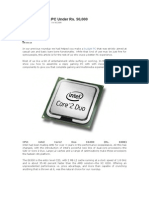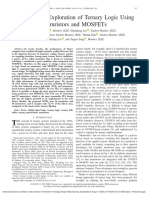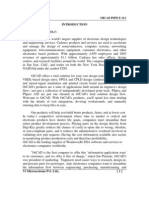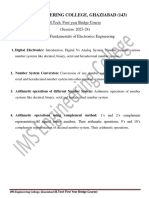0% found this document useful (0 votes)
88 views89 pagesModule - 6
The document discusses techniques for latency hiding in distributed shared memory machines. It describes three main approaches: 1) using pre-fetching techniques, 2) using coherent caching techniques, and 3) using multiple contexts. For pre-fetching, it discusses hardware and software controlled pre-fetching as well as issues of coherence. For caching, it notes the benefits of caching for performance. For multiple contexts, it explains how context switching can reduce idle processor time during remote memory accesses.
Uploaded by
anjuCopyright
© © All Rights Reserved
We take content rights seriously. If you suspect this is your content, claim it here.
Available Formats
Download as PPTX, PDF, TXT or read online on Scribd
0% found this document useful (0 votes)
88 views89 pagesModule - 6
The document discusses techniques for latency hiding in distributed shared memory machines. It describes three main approaches: 1) using pre-fetching techniques, 2) using coherent caching techniques, and 3) using multiple contexts. For pre-fetching, it discusses hardware and software controlled pre-fetching as well as issues of coherence. For caching, it notes the benefits of caching for performance. For multiple contexts, it explains how context switching can reduce idle processor time during remote memory accesses.
Uploaded by
anjuCopyright
© © All Rights Reserved
We take content rights seriously. If you suspect this is your content, claim it here.
Available Formats
Download as PPTX, PDF, TXT or read online on Scribd
/ 89



